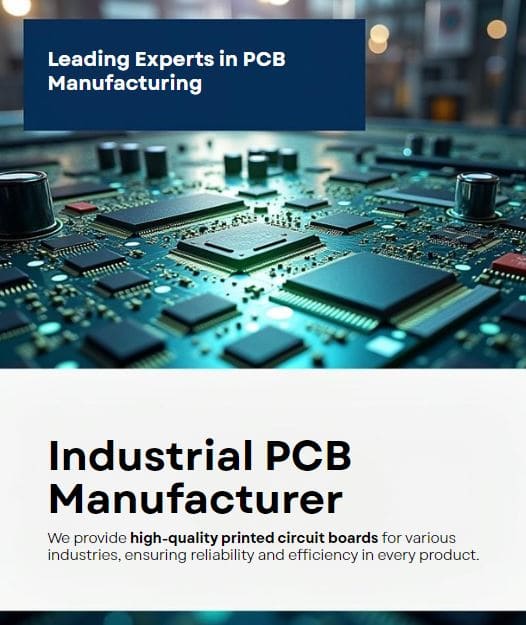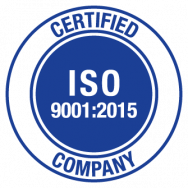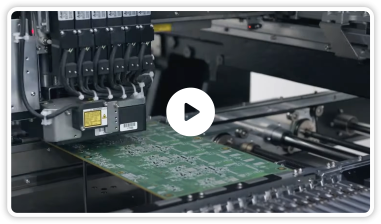The industrial sector uses many types of PCBs or printed circuit boards. Industrial facilities often operate in adverse environments. Therefore, industrial application PCB must perform under the most demanding conditions without failing. For instance, these boards must withstand wide temperature fluctuations. They must also function under hazards like high humidity and vibrations. Typically, such adverse conditions can swiftly damage standard boards.At Rush PCB Inc., we follow special processes for manufacturing industrial applications PCB. We make them tough enough to withstand extreme operating conditions. Our industrial-grade PCBs are of high quality and are highly reliable. They function for extended periods, without issues, usually for 5-10+ years. In important industrial sectors like defense, aerospace, automation, energy, and transportation, our industrial-grade PCBs enable core functionality for many equipment.

How do Industrial PCBs Differ from Regular PCBs?
The IPC standards classify PCBs based on their quality and reliability requirements. There are three classes:
IPC Class 1: PCBs in this class suit consumer electronic products. Here, the cost is high-priority. But it is acceptable to have occasional failures.
IPC Class 2: PCBs in this class are suitable for electronic products in the commercial sector. These need to be more reliable and durable.
IPC Class 3: PCBs in this class are suitable for high-end type critical devices. Here, failure is not an option.
Most regular PCBs fall either in the IPC Class 1 or in the IPC Class 2 category. Industrial PCBs belong exclusively to the IPC Class 3 category.
IPC Class 3 standards require excellence in electronic manufacturing. The standard defines high levels of precision, quality, and reliability. Under Class 3, all components must withstand extreme temperature conditions. They must also be tested rigorously. They must also conform to standards of safety and performance. The differences between Class 2 and Class 3 are as follows:
| Features | IPC Class 2 | IPC Class 3 | Remarks |
| Track Width and spacing | (0.010 in / 10 mils) | (0.007 in / 7 mils) | Class 3 demands tighter spacing; higher density and reliability |
| Annular ring in pads and vias | Minimum 0.002 in / 2 mils | Minimum 0.003 in / 3 mils | Class 3 requires a wider annular ring for better durability |
| PTH or plated through holes | Relaxed tolerances that allow some displacement | Tighter tolerances and minimal displacement | Class 3 standards specify higher precision in PTH |
| Solder Mask | Regular application | Precise application with tighter clearances | Class 3 demands more accurate solder mask placement |
| Board Thickness | Standard thickness for general use | Thicker boards accommodating higher layer counts | Class 3 boards must operate in more demanding environments |
| Thermal Management | Standard considerations apply | Higher component density requires enhanced thermal management | Class 3 boards require advanced thermal management solutions |
Industrial Application PCB must handle temperature swings. This can swing between -65 and +150 °C. They must also resist high voltages, mechanical shock and vibrations, high humidity, and corrosive chemicals. These PCBs must perform reliably for 10–15 years.
Types of PCBs for Industrial Applications
At Rush PCB Inc., we manufacture various types of PCBs suitable for industrial applications. These are primarily of three types:
- We make these PCBs with a single substrate layer and one copper layer. They are of the simplest type.
- We make these PCBs with one substrate layer sandwiched between two copper layers. They are of the moderately complex type.
- multiple copper layers. These are the most complicated PCB type.
- We make these PCBs with rigid substrates. They cannot bend or twist.
- We make these PCBs with flexible substrates. These PCBs can flex or bend, and also twist.
- We make these PCBs with rigid sections and flexible sections interconnecting them. These PCBs offer both structural rigidity and flexibility.
- We make these PCBs typically with aluminum as the metal base. These boards offer good mechanical strength. They exhibit high heat removal capacity.
- We make these PCBs with low-loss material. Their design allows them to operate at high speeds and high frequencies.
- laser-drilled micro-vias for interconnection between different layers. We also use advanced technology like via-in-pads. This allows us to improve the component density significantly.
Our PCB Assembly Capabilities for Industrial PCBs
We mainly use two methods for assembling PCBs for industrial applications. These are:
Through-Hole Mounting Process: We use PCBs with through holes. We insert component leads into these holes. For soldering these boards, we use the wave soldering process.
Surface Mounting Process: For these PCBs, we use surface mount components. We place the components directly on the PCB pads over solder paste. For soldering, we use the reflow process.
Surface mounting is a superior process. It allows the achievement of much higher component densities. Over the years, manufacturers have been making smaller surface-mount components. Therefore, PCBs can be much smaller. Additionally, this reduces the assembly cost. We use automated machines for mounting surface mount components. This improves the mounting accuracy. It also improves the reliability of the assembled board. The throughput is also much higher.
Standards for Industrial PCBs
We follow several international standards for our industrial application PCB. They typically prescribe construction methods. They also define risk analysis techniques. Additionally, they include test procedures and key metrics. Conforming to these standards allows us to achieve longer field life for our PCBs and higher temperature extremes. Our PCBs can also withstand fast transients and vibrations.
Some major standards we follow are:
IPC-2221 Class 3
This standard covers generic performance requirements for industrial-grade PCBs. It specifies a minimum level of performance for most industrial applications. The requirements relate to:
- Temperature varying between -65 and +150 °C
- Mechanical shock between 100 and 150G
- Vibrations from 10 to 500 Hz at 10G+
- Other environmental stresses
- Moisture resistance
IPC-6012
These performance standards are specifically tailored for transportation/automobile use.
IPC-A-610
This is a standard for the acceptability of visual defects. Its focus is mainly on workmanship. This involves component orientation, soldering quality, and surface finish.
IEC-61188
This is an international guideline from the IEC. It relates to:
- PCB material/finish properties
- PCB layout and stack up
- Electrical testing methods
- Environmental stress test methods including gas and corrosion testing
- Lot traceability in production
UL 796
This standard from the Underwriters Laboratories has construction methods for boards. It is useful for boards requiring UL listing, mainly for power electronics. It relates to:
- Flame resistance
- Temperature indexing tests
- Electrical testing methods
Materials we Use for Industrial PCBs
To allow our industrial application PCB to withstand higher stresses, we use special materials and stack-up methods, such as:
- FR-4 Glass Epoxy
We use FR-4 for PCBs operating in mild environments. The material is low-cost and offers moderate performance.
- High Tg FR-4
This material offers higher heat resistance in comparison with the regular FR-4. We mainly use this material for power electronics PCBs.
- Polyimide
flexible PCBs. The main advantage of this material is the extreme temperature range it can withstand.
- IMS
This material has high thermal conductivity. We use it primarily for power devices and LEDs.
- Ceramic
This material has very stable characteristics. It is suitable for high-frequency boards. It can also withstand high temperatures.
- Metal Core
We use metal cores for PCBs where good heat dissipation is necessary.
Technologies we Use for Industrial PCBs
Depending on the application, we use special layers in our industrial PCBs. These may contain:
- Thicker copper, >2 oz, for higher currents
- Buried / blind vias in HDI PCBs
- Impedance control layers for high-speed boards
- GND / VCC layers for EMI shielding
- Graphic layers for thermal management
- Conformal coatings for improving the resistance of our industrial PCBs to moisture, corrosion, contamination
- Potting compounds to improve the shock and vibration resistance of the PCB.
Our Design Practices for Industrial PCBs
Our Industrial Application PCB work under demanding conditions. For reliable functioning, we follow strict design guidelines, such as:
- Early Simulation
We use tools like Ansys and Comsol. We use them to extensively model mechanical, thermal, and electrical testing. This allows us to predict resonances and responses. We can spot problems before we build prototypes.
- Derating Rules
We use component derating guidelines to lower the actual operating values. We operate below absolute maximum ratings in datasheets. We can margin against drifting parameters. It also allows us to improve the lifespan.
- Layout Methods
We use various design layout methods:
- Thermal vias for thermal management
- Stitching vias to improve EMI/EMC
- Edge control structures to improve EMI/EMC
- Wide and thick conductors for high currents and vibrations
- Redundancy
We always have extra traces and pathways for backup. We also use connections with automated failover capability. These prevent single points of failure.
- DFM Analysis
We use rigorous design analysis checks. This helps us to locate manufacturability issues. Typically, these issues relate to trace width and spacing. They also relate to annular rings.
- Standard Validation
We qualify our designs by testing for conformity to various standards.
Why Rush PCB Inc. for Industrial Application PCB
For industrial application PCB, partnering with Rush PCB Inc. will bring several advantages such as:
- Multiple years of experience with many industrial customers
- Wide expertise in materials like metalcore, rigid-flex, and ceramic PCBs
- Services like Designing for Excellence to help product development
- Experienced staff and engineers for validating layout to standards
- Global quality certifications — ISO 9001, AS 9100D, ITAF 16949, ITAR
- Handling proprietary data of customers
- GERBER and DFM analysis
- Standard testing and inspection processes
- Qualification reports
- Obsolescence and inventory management
- Controls for counterfeit parts avoidance
Finally
If you are looking for an Industrial PCB manufacturer, you can stop at Rush PCB Inc. Send us your requirements for an instant quote. We optimize our manufacturing processes to meet customer’s requirements. Contact us today to start your industrial PCB project.
Why do you still use FR-4 for industrial PCBs?
They are also cheap, and easily available, and fabricators are familiar with the material.
Which standard do you follow for Industrial PCBs?
Do you train your personnel to accept industrial PCBs?
Why do you use HDI technology for Industrial PCBs?
Where are industrial PCBs used?









